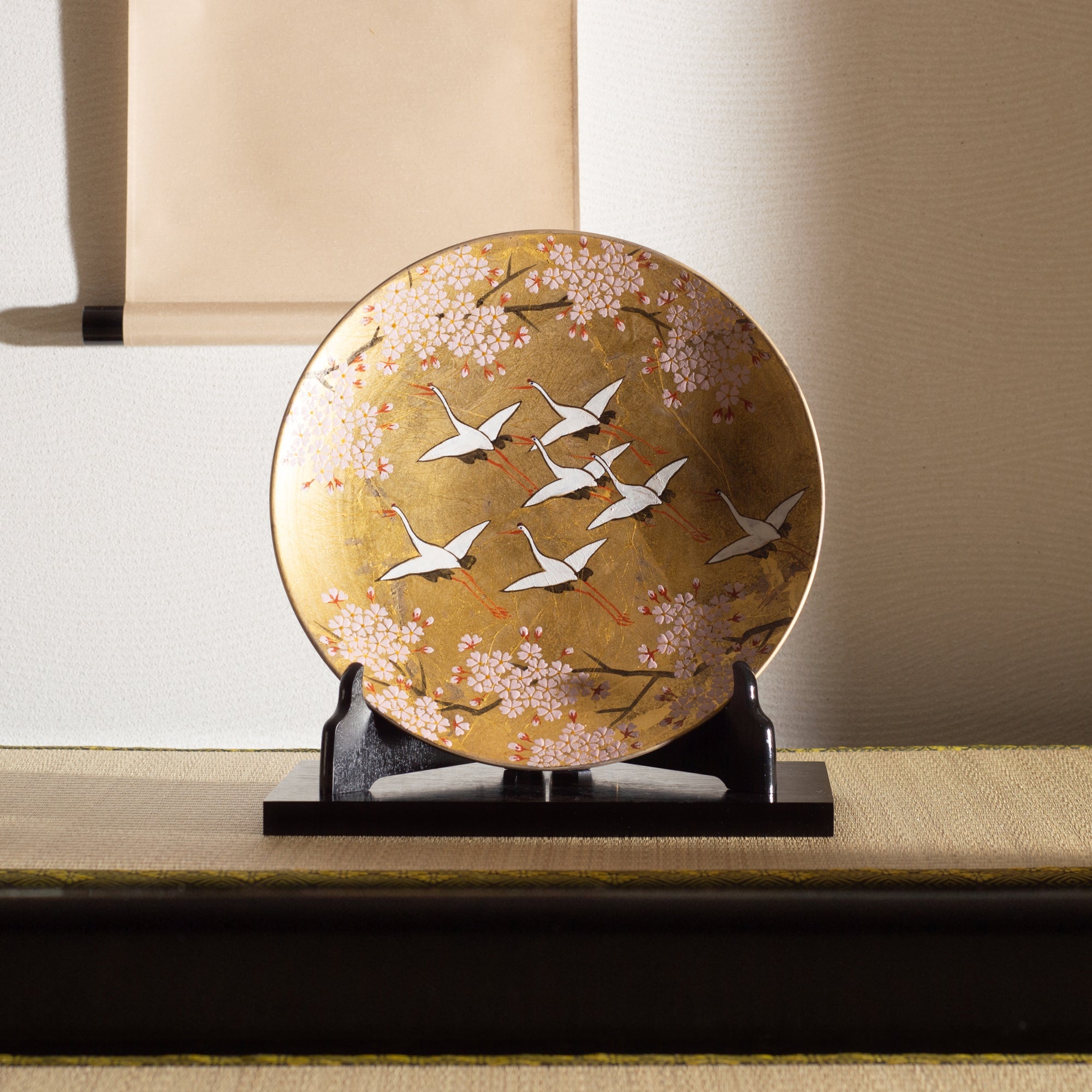
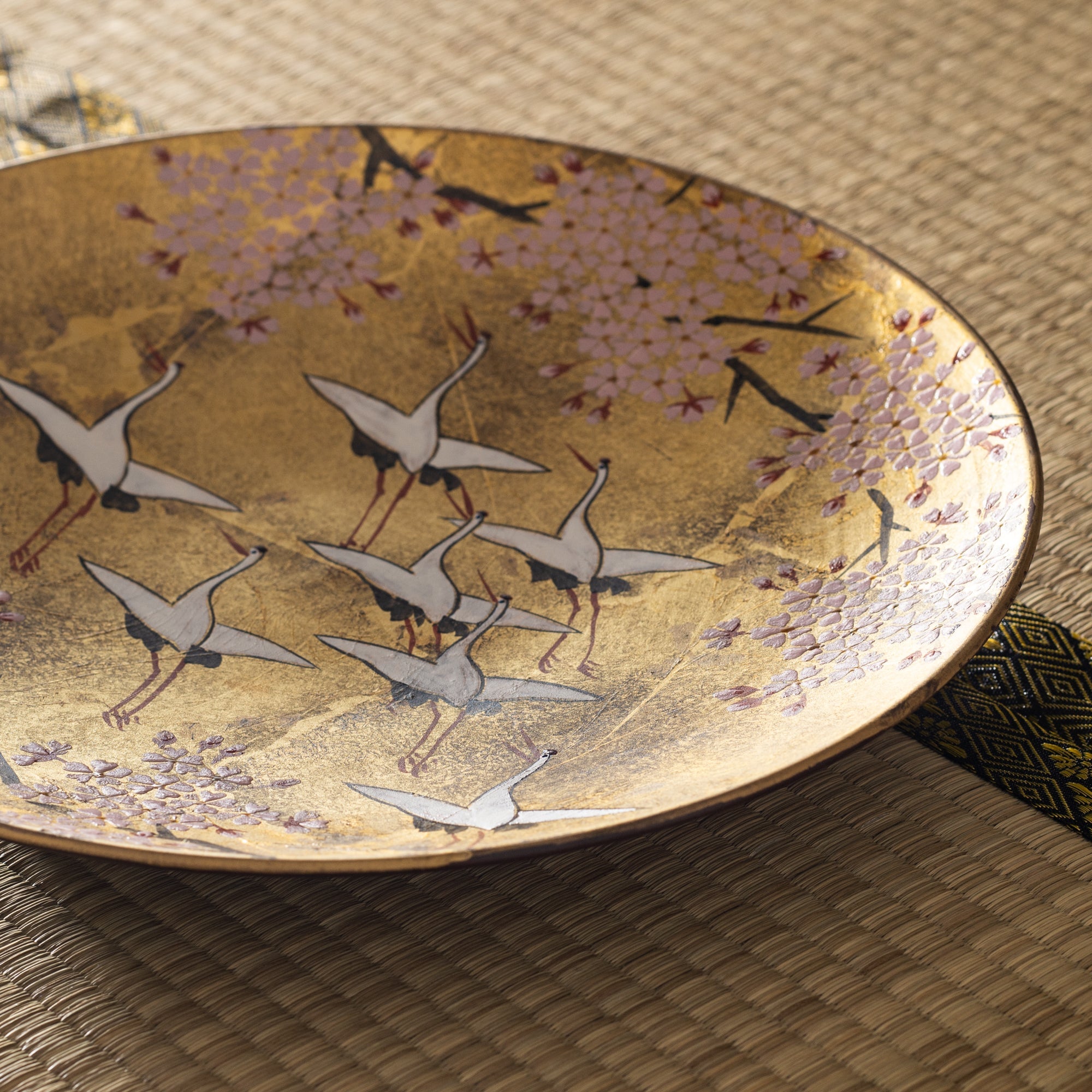
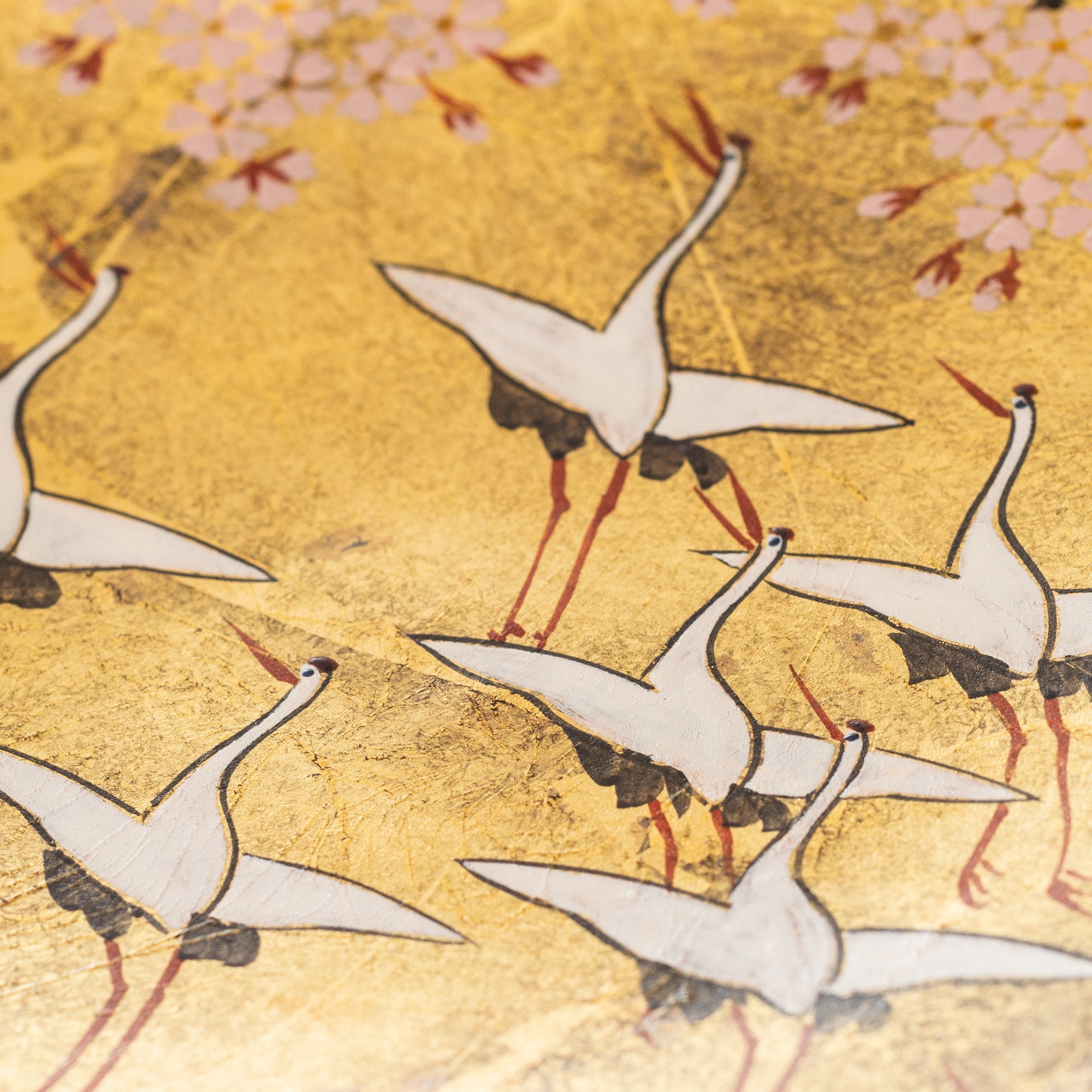
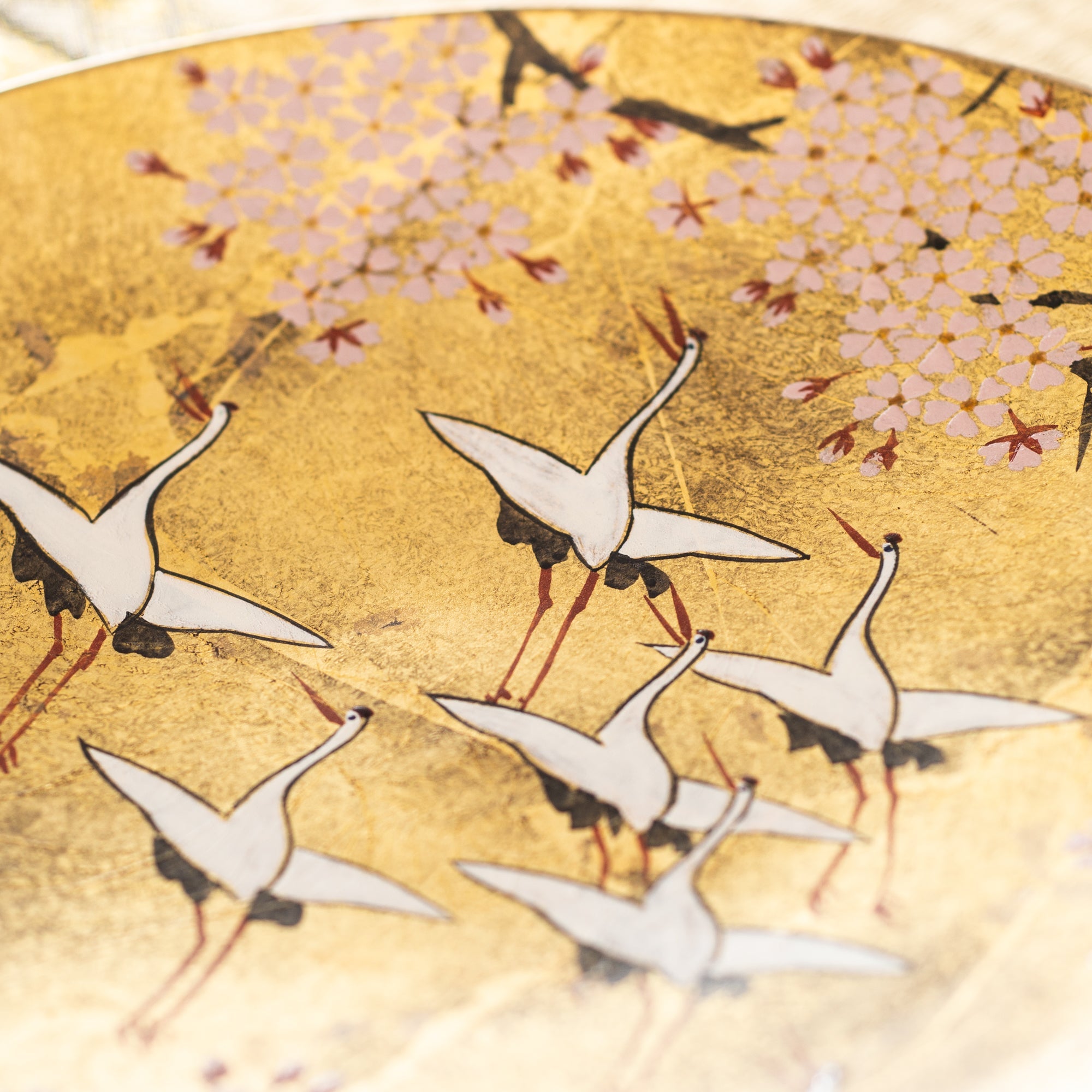
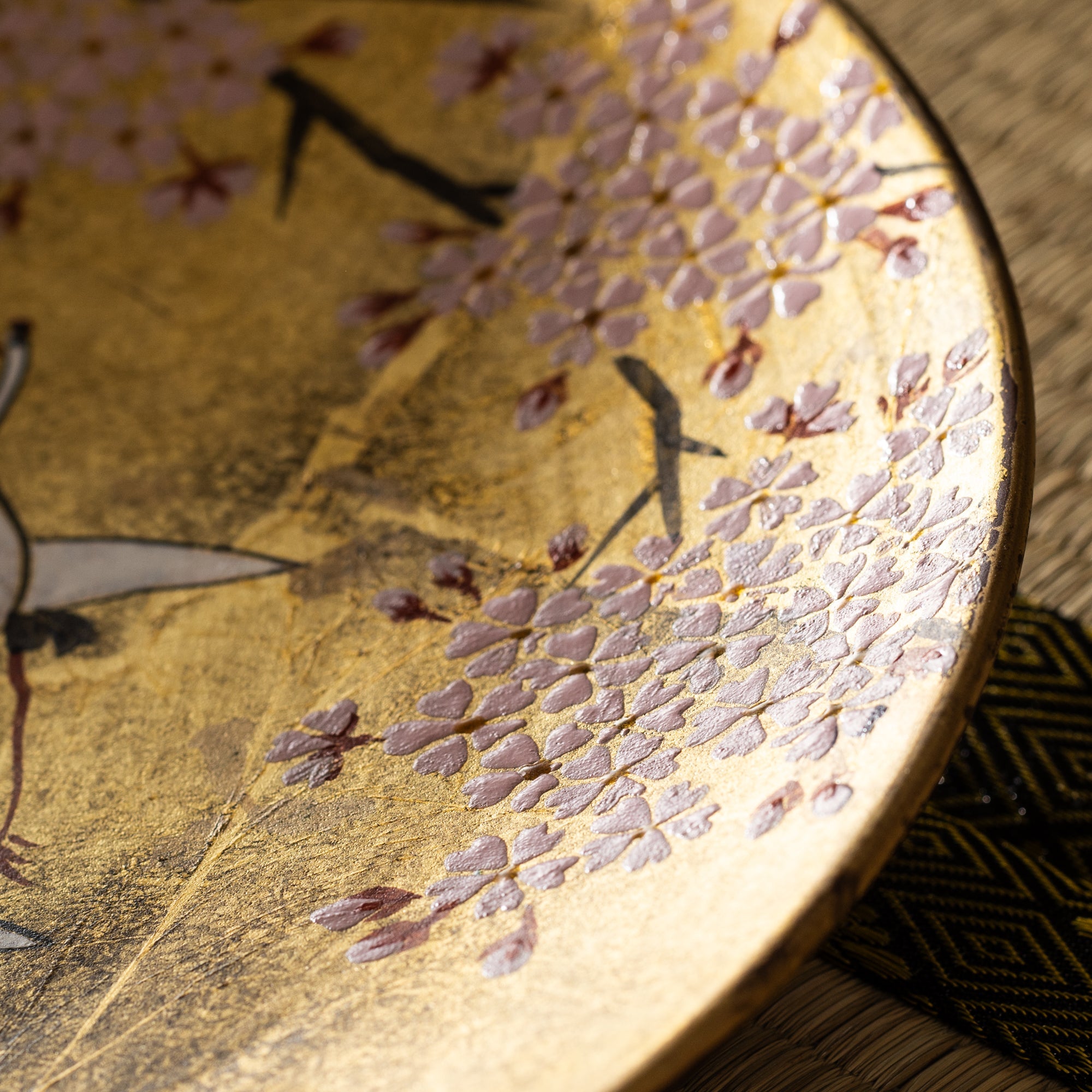
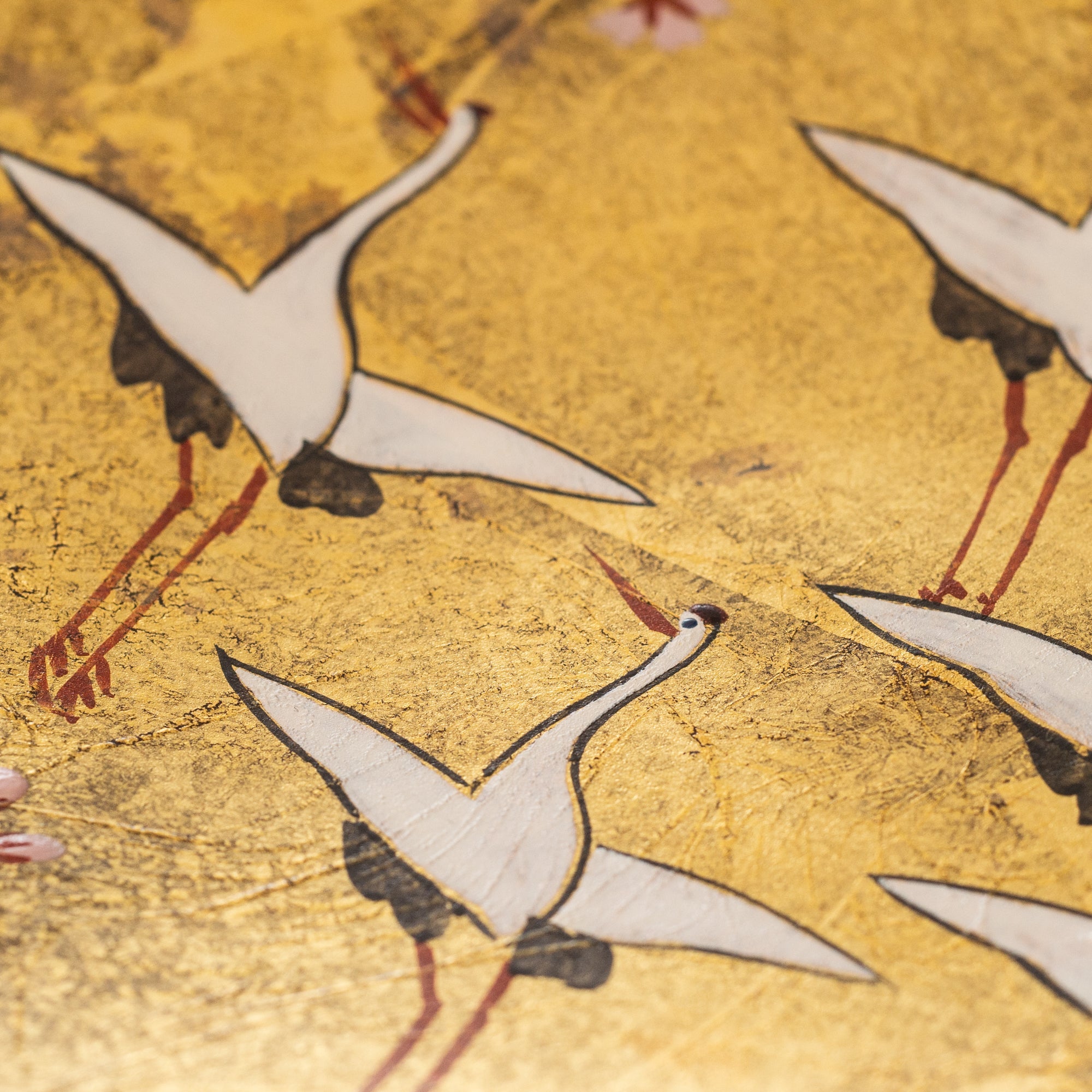
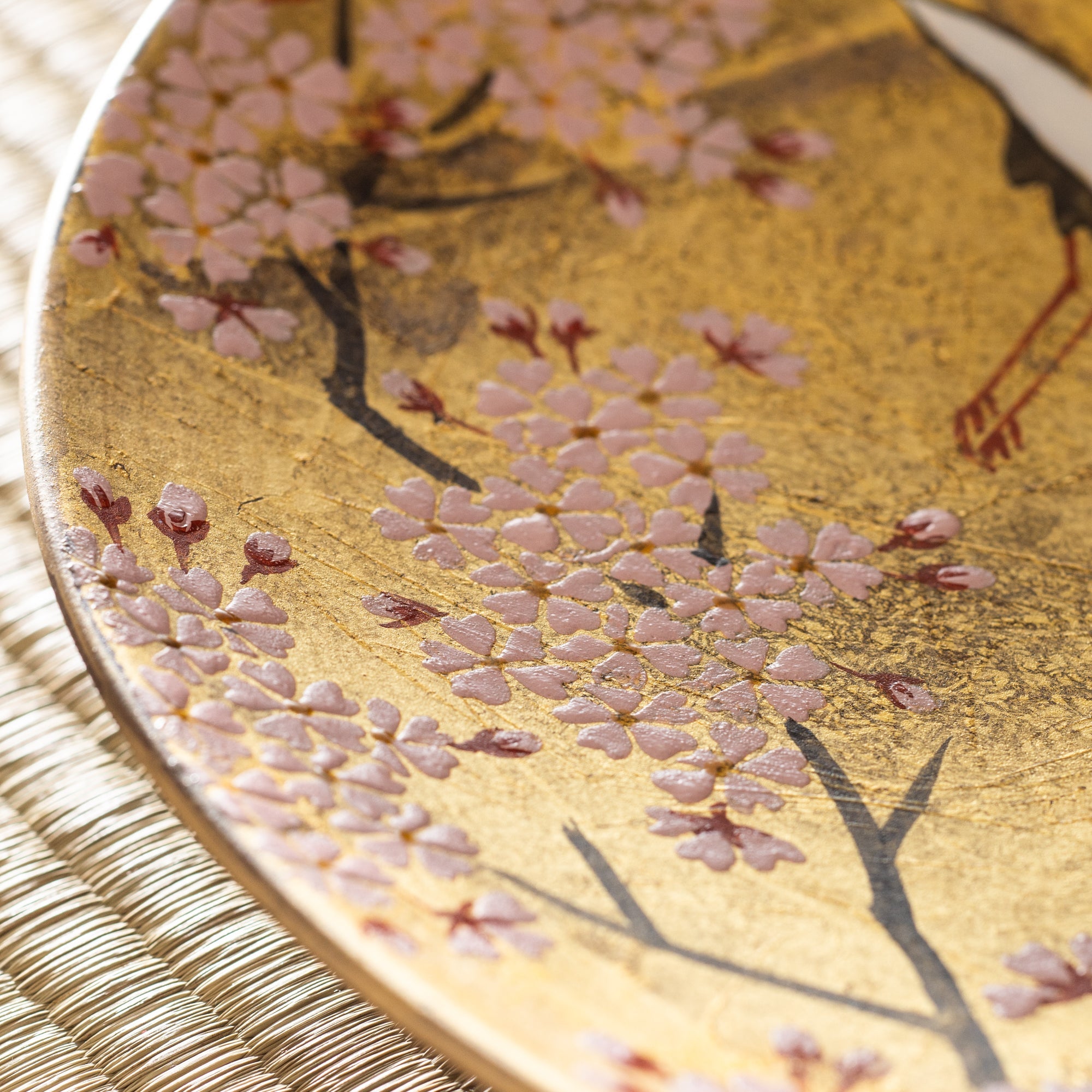
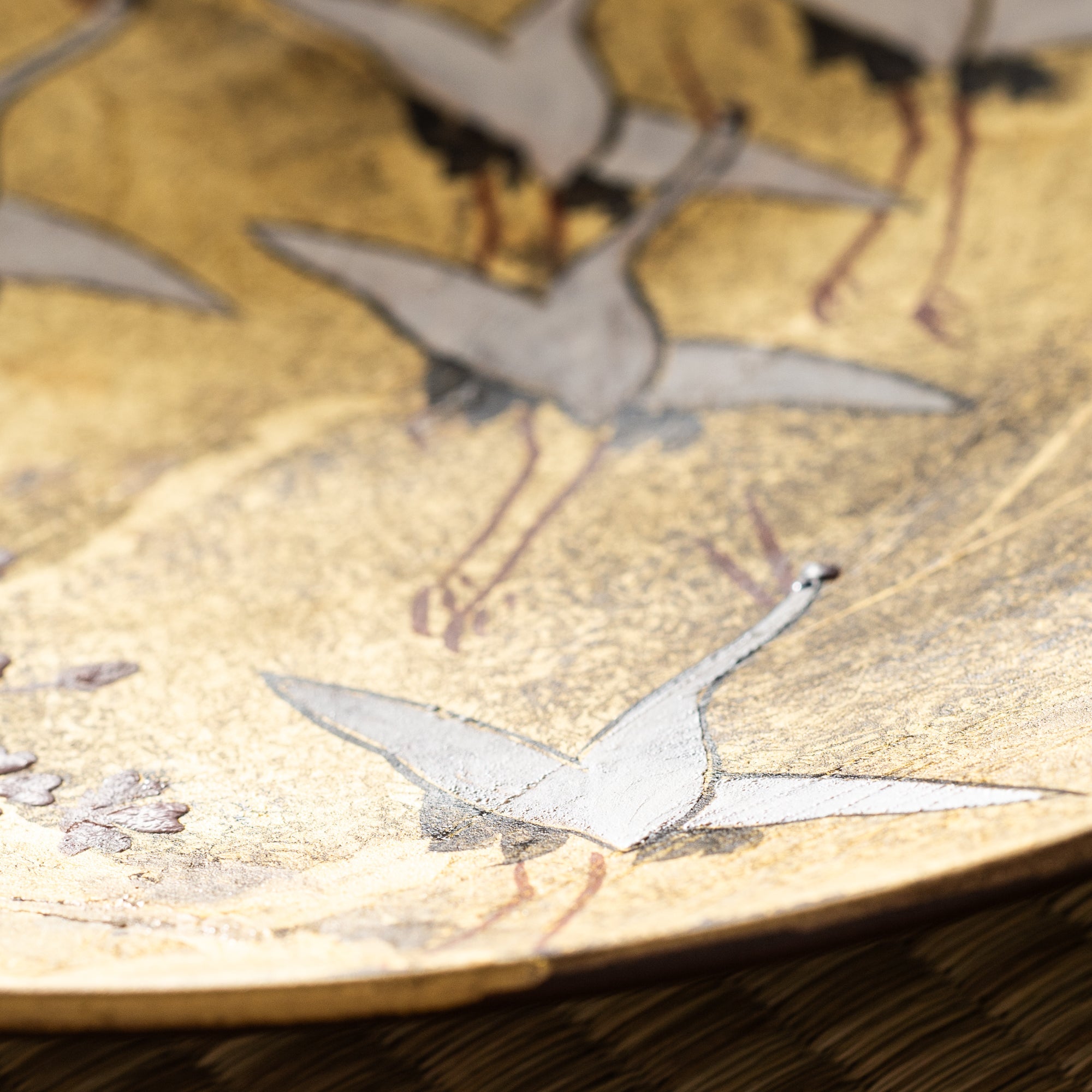
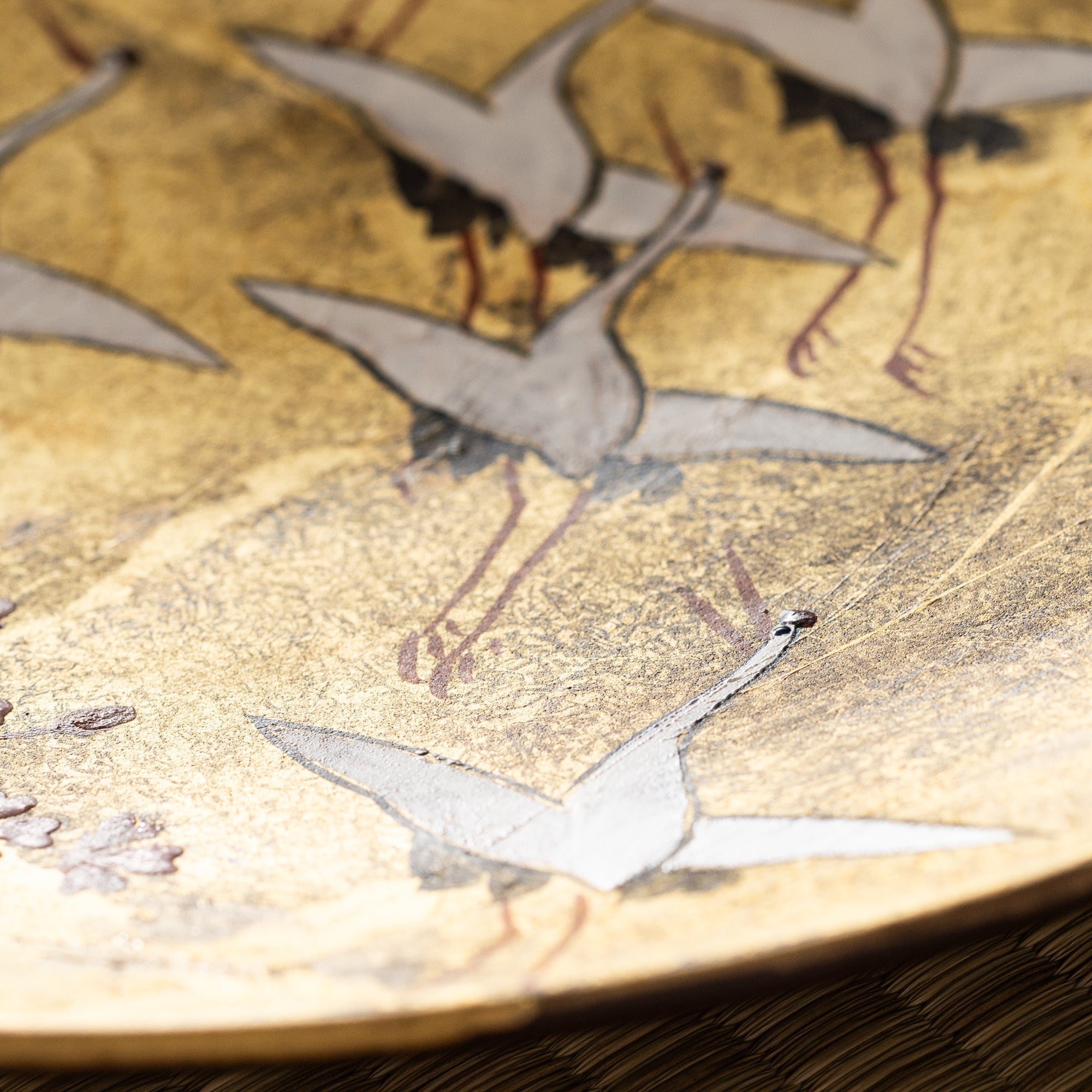
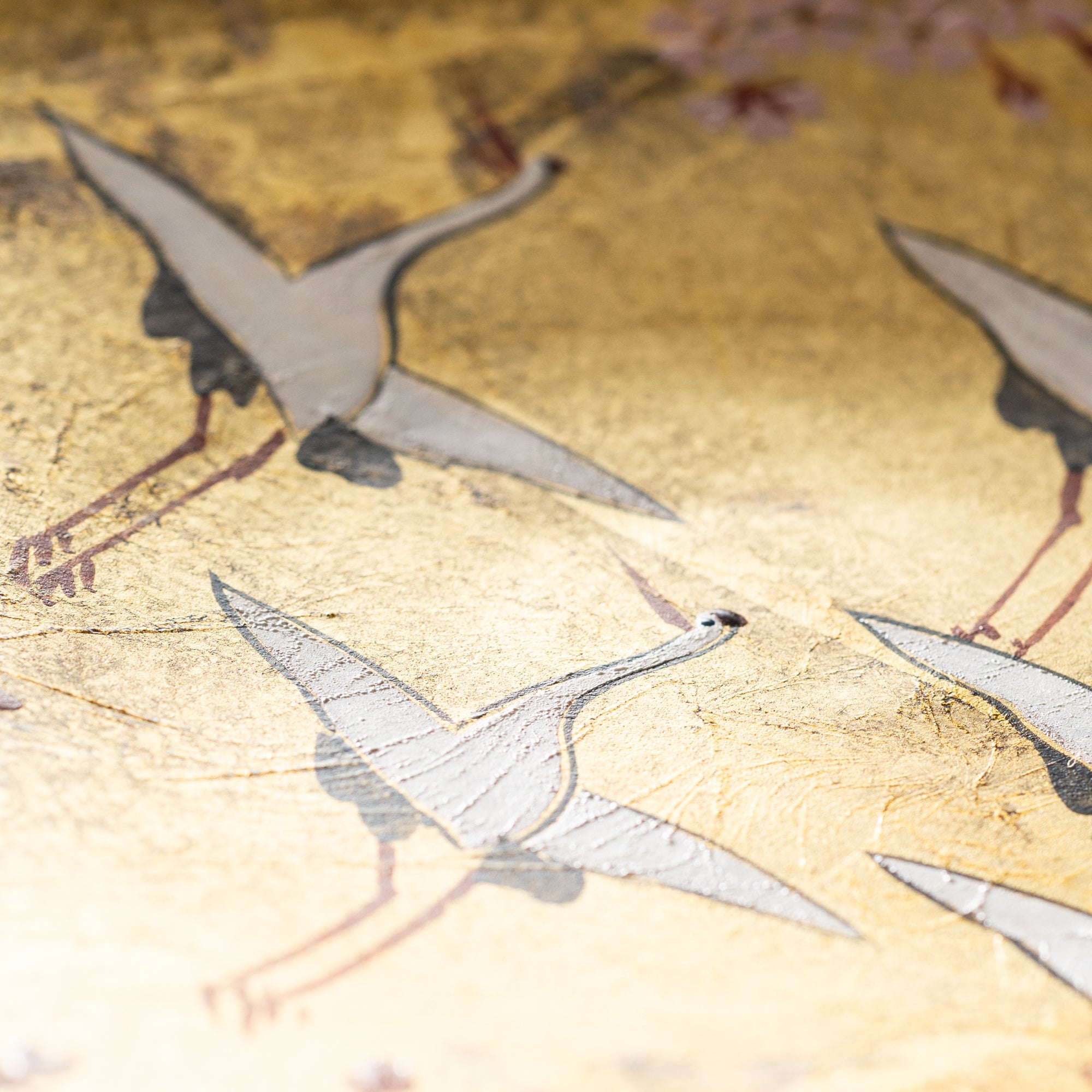
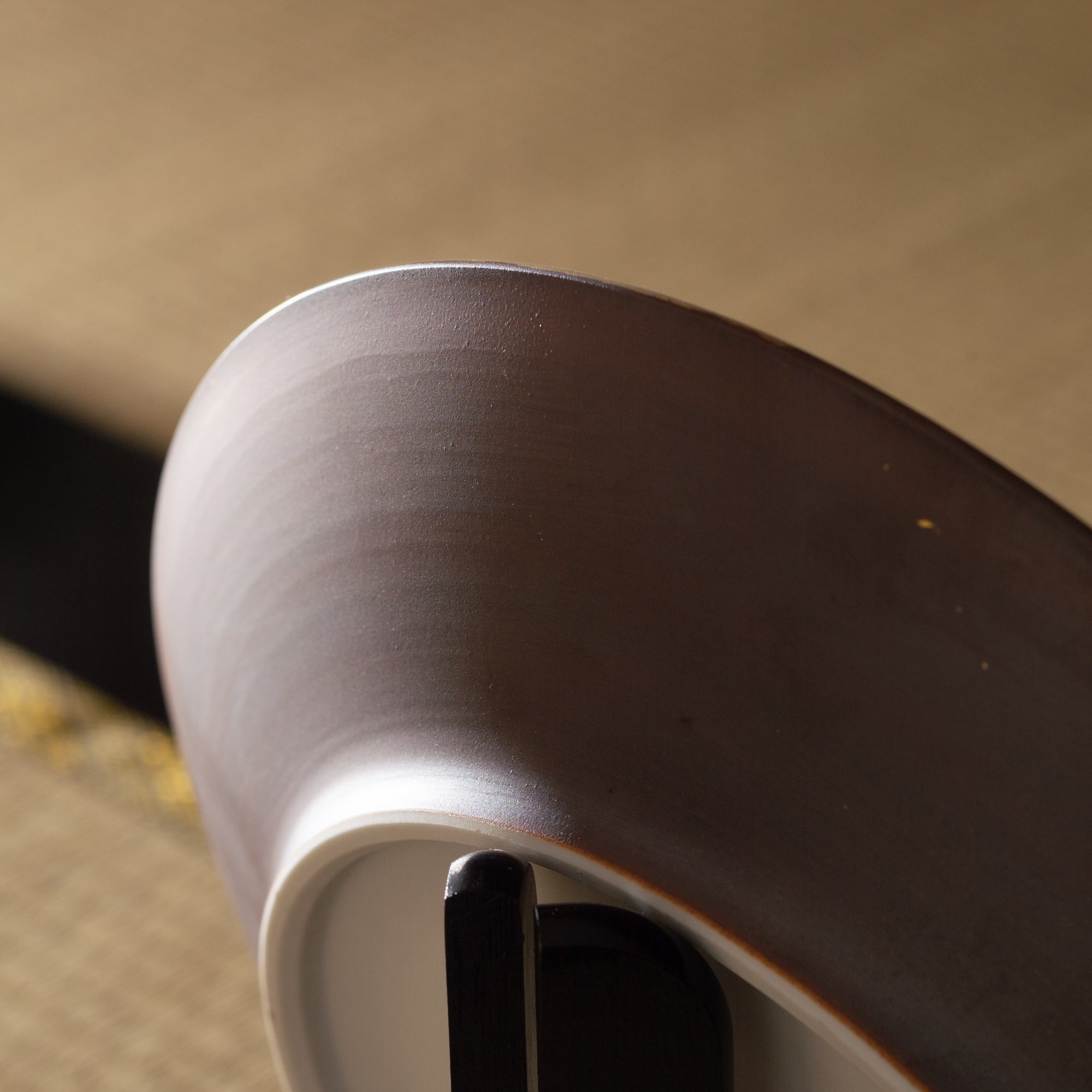
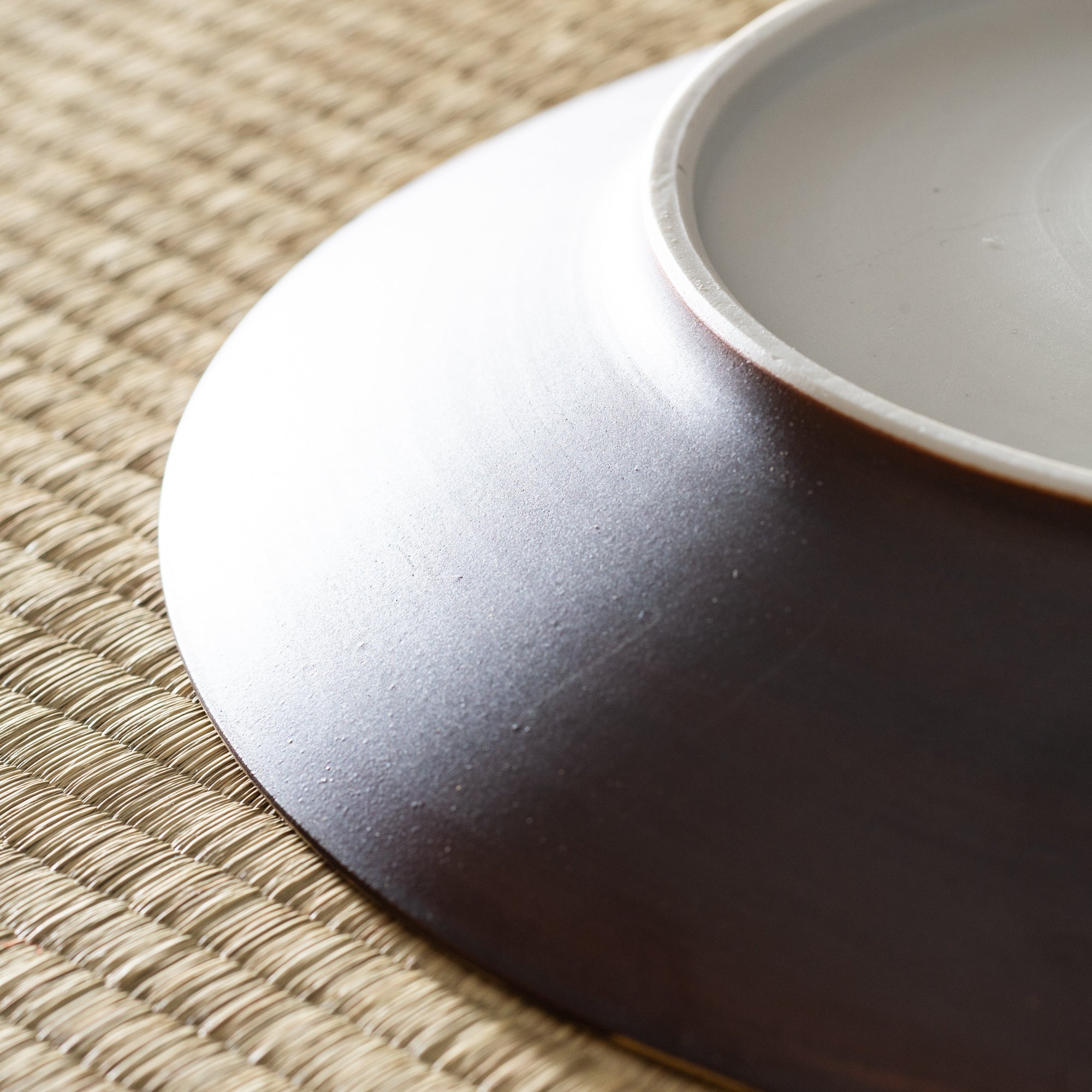
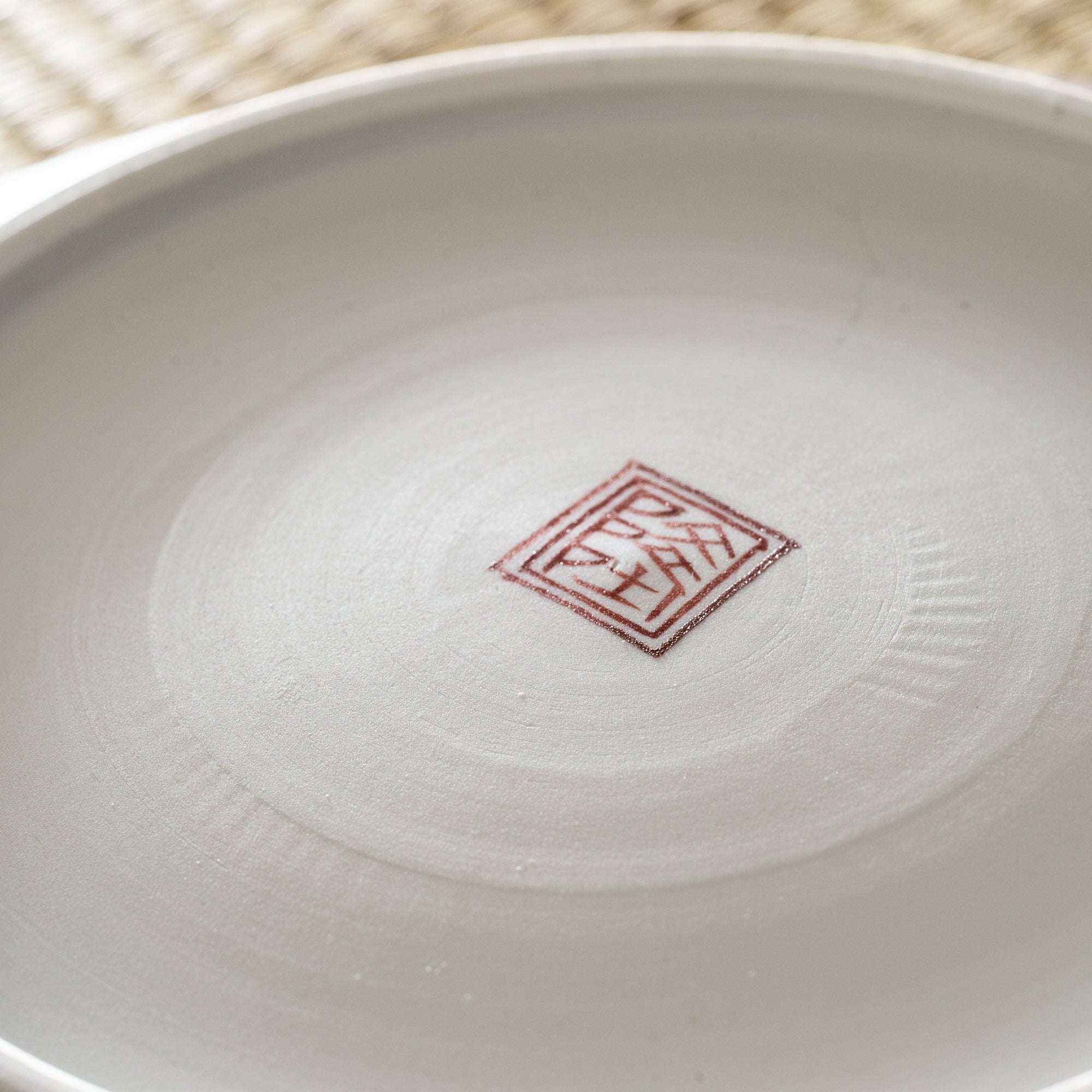
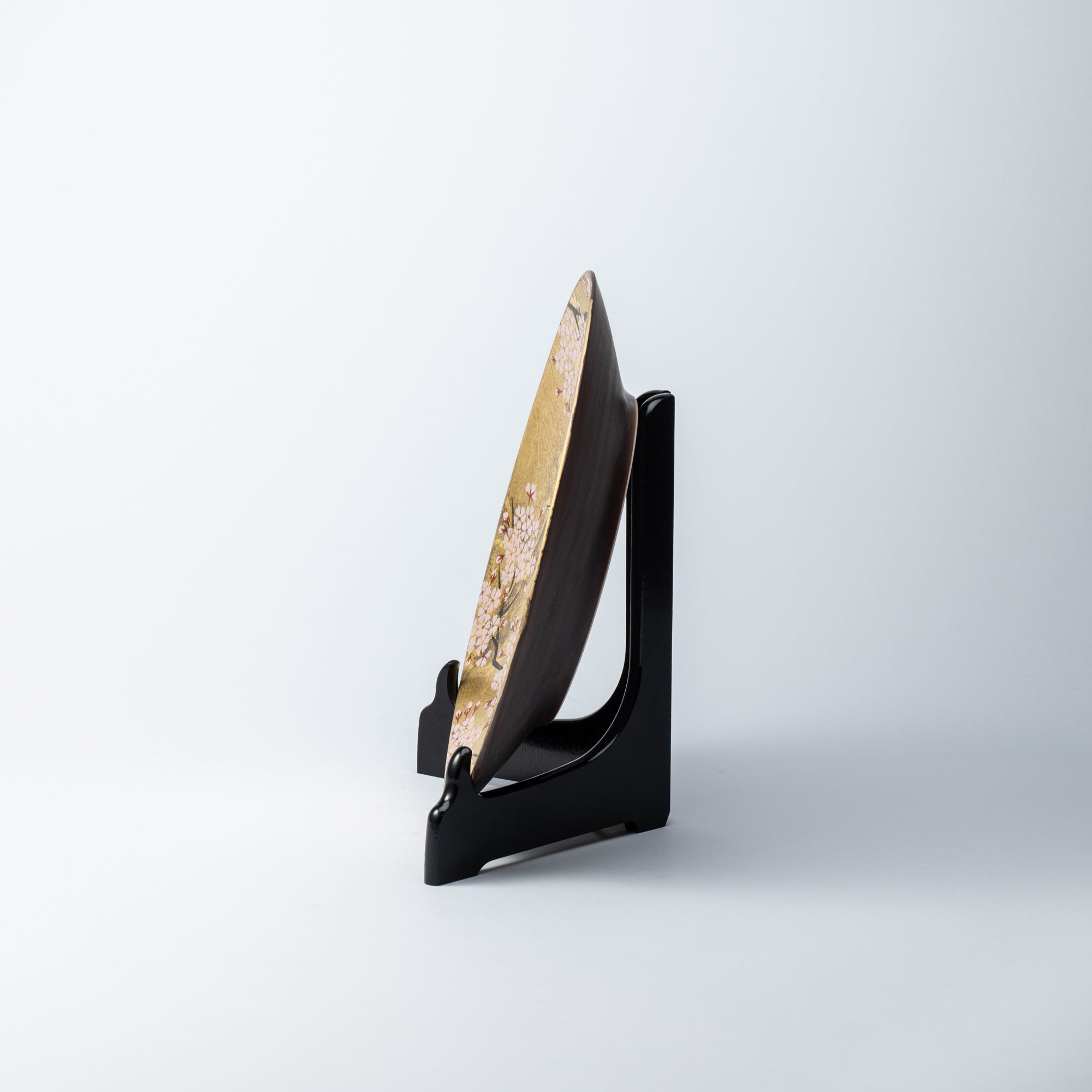
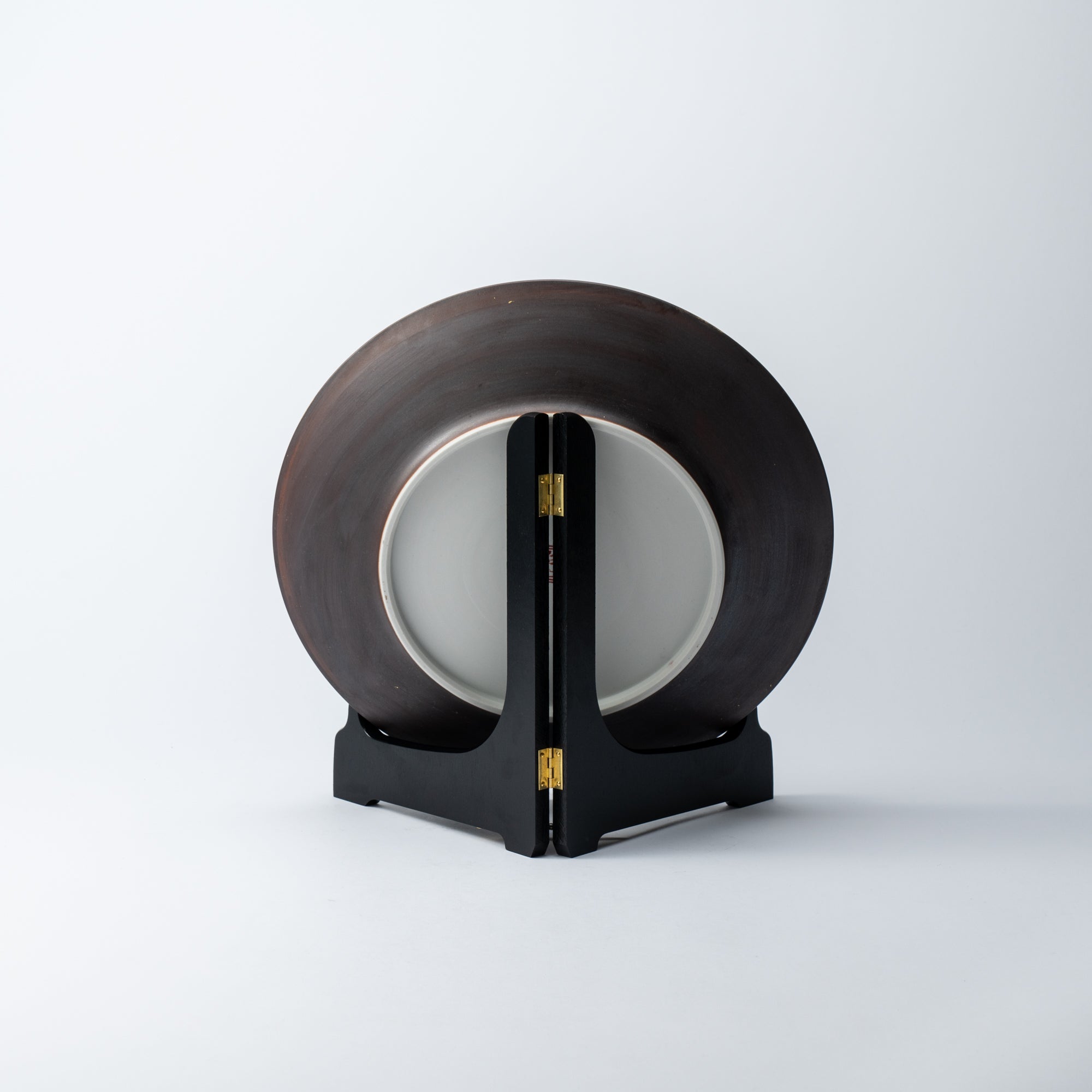
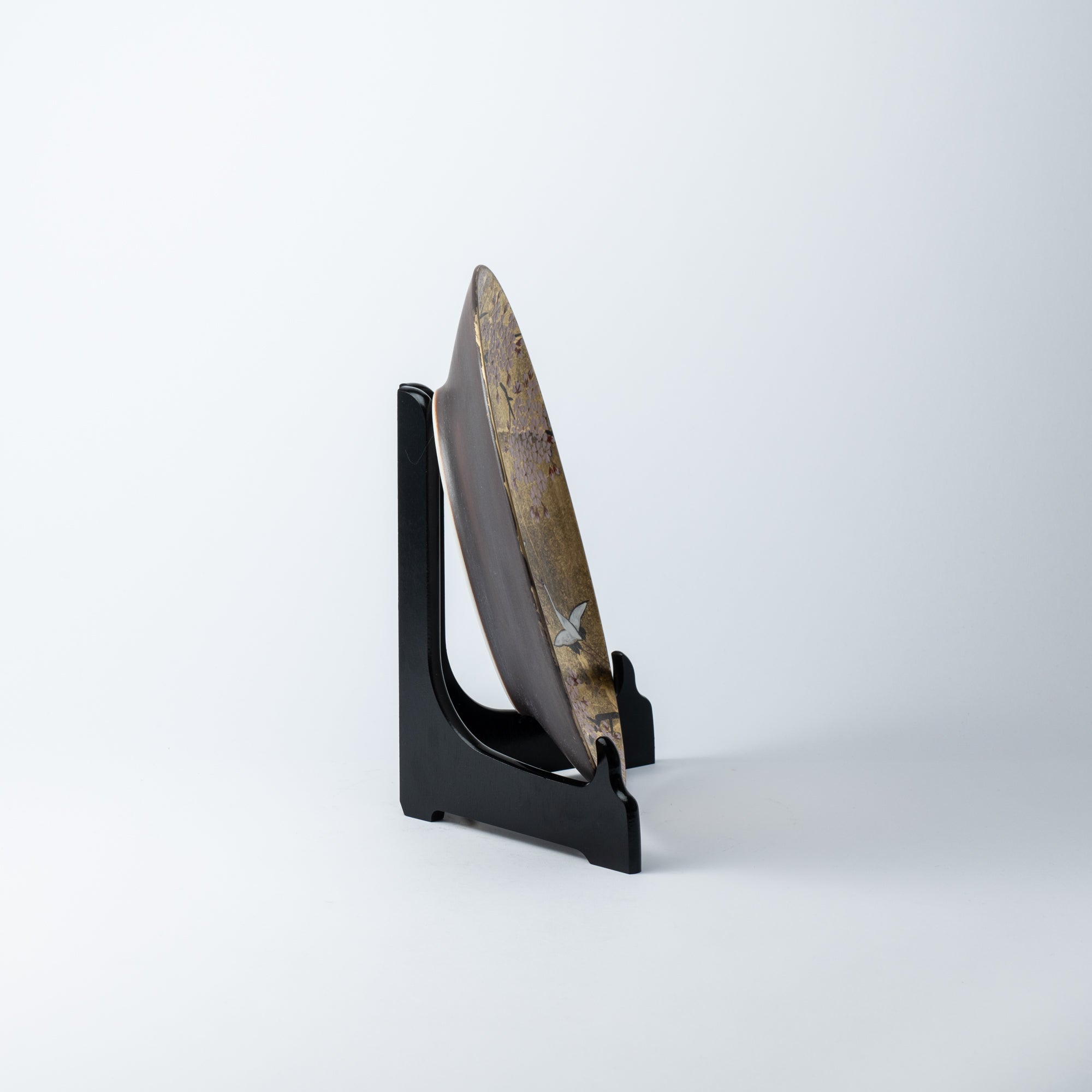
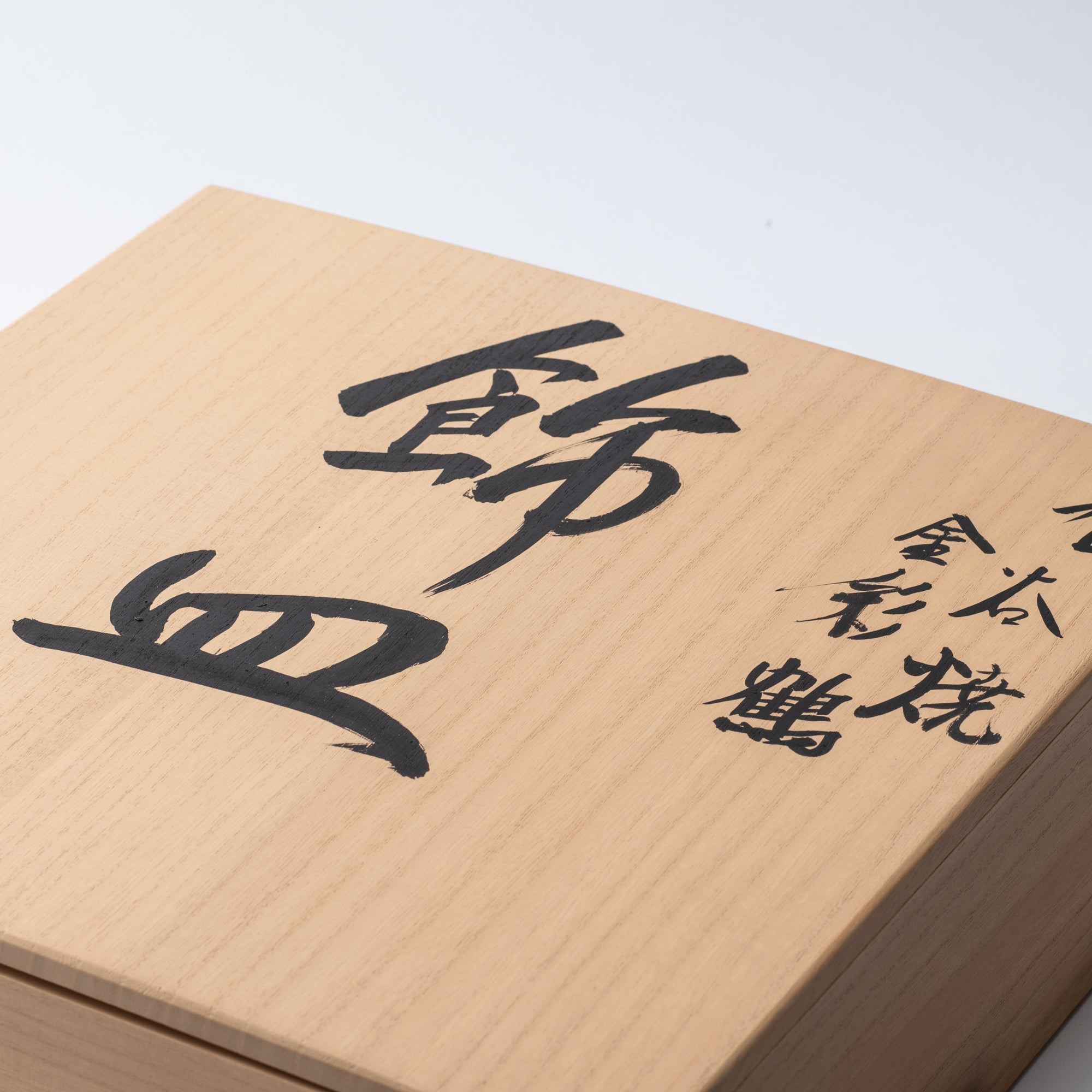
Crane Gold Leaf Ornamental Plate
This ornamental plate, rendered with fluid and skillful brushwork, features a flock of cranes taking flight under blooming cherry blossoms, all depicted with the distinctive rich colors of Kutani ware. The background is adorned with gold leaf, giving the entire piece an aura of elegance and nobility.
The word 鶴 "crane" was brought to Japan from ancient China, where the crane is considered a symbol of longevity and auspiciousness, believed to live for a thousand years. This concept also spread to Japan, where cranes became particularly popular as decorative motifs among the nobility and samurai during the Heian period (794 CE–1185 CE). By the Edo period (1603 CE–1868 CE), crane paintings and embroideries had become fashionable among the common people as well.
One of the most captivating aspects of Kutani ware is its vibrant colors. The artist, Kitamura Takashi, inspired by ko-Kutani ware, employs his research and color-mixing techniques to create a vivid painting using the Kutani go-sai "five colors." Various forms of pink cherry blossoms and lifelike cranes come together to form an exceptionally beautiful scene.
Through this artwork, the artist conveys a sense of opulence and elegance. The meticulously crafted gold leaf background emits a gentle glow reminiscent of warm spring sunlight, while the adorable pink cherry blossoms combined with the auspicious cranes present a scene of prosperity and grandeur.
The gold leaf background reflects a soft, gentle light, which is not dazzling and beautifully highlights the elegance of the cherry blossoms and cranes. The black color on the surface, resembling brush strokes in an ink painting, comes from the iron-rust glaze visible beneath the gold leaf. This interplay of colors and textures imparts a profound sense of artistic beauty to the piece, captivating the viewer with its depth and complexity.
DETAIL
| Quantity | 1 |
| Size | D 32.0 cm (12.6 in) x H 6 cm (2.7 in) |
| Material | Stoneware |
| Package Type | Wooden box |
| Microwave | No |
| Dishwasher | No |
Origin
Choose options

















Collection
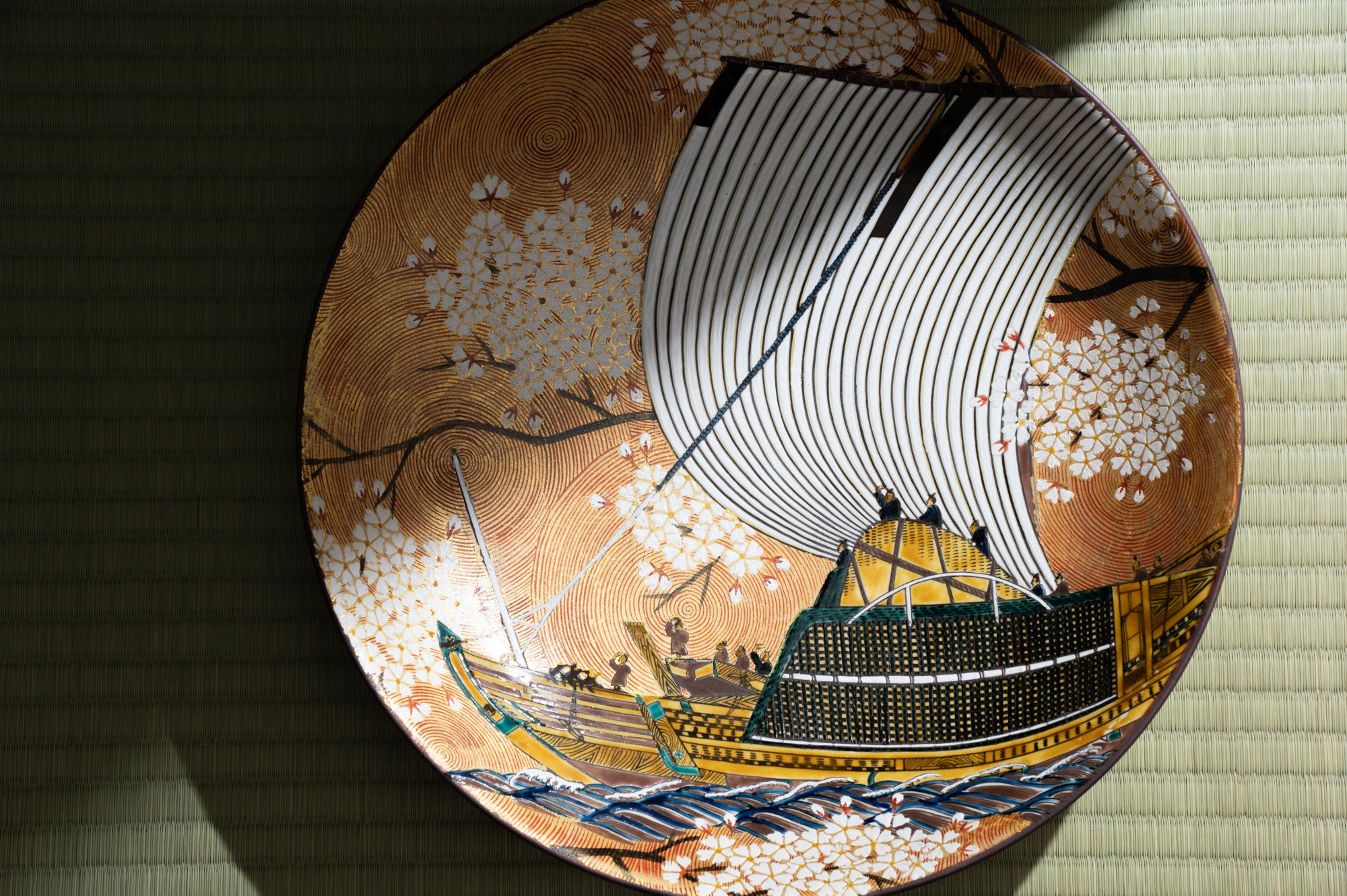
Interview
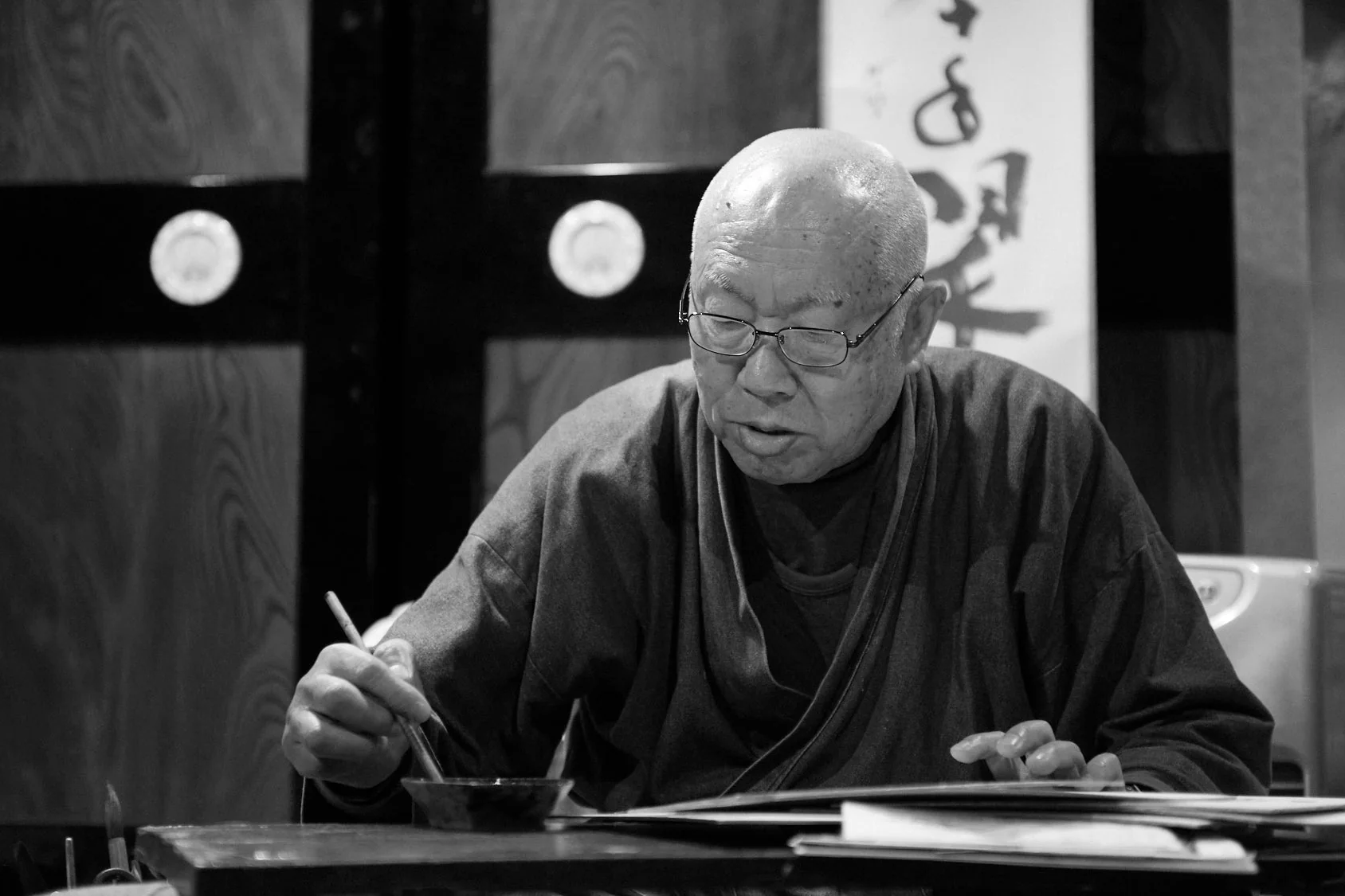
Concept
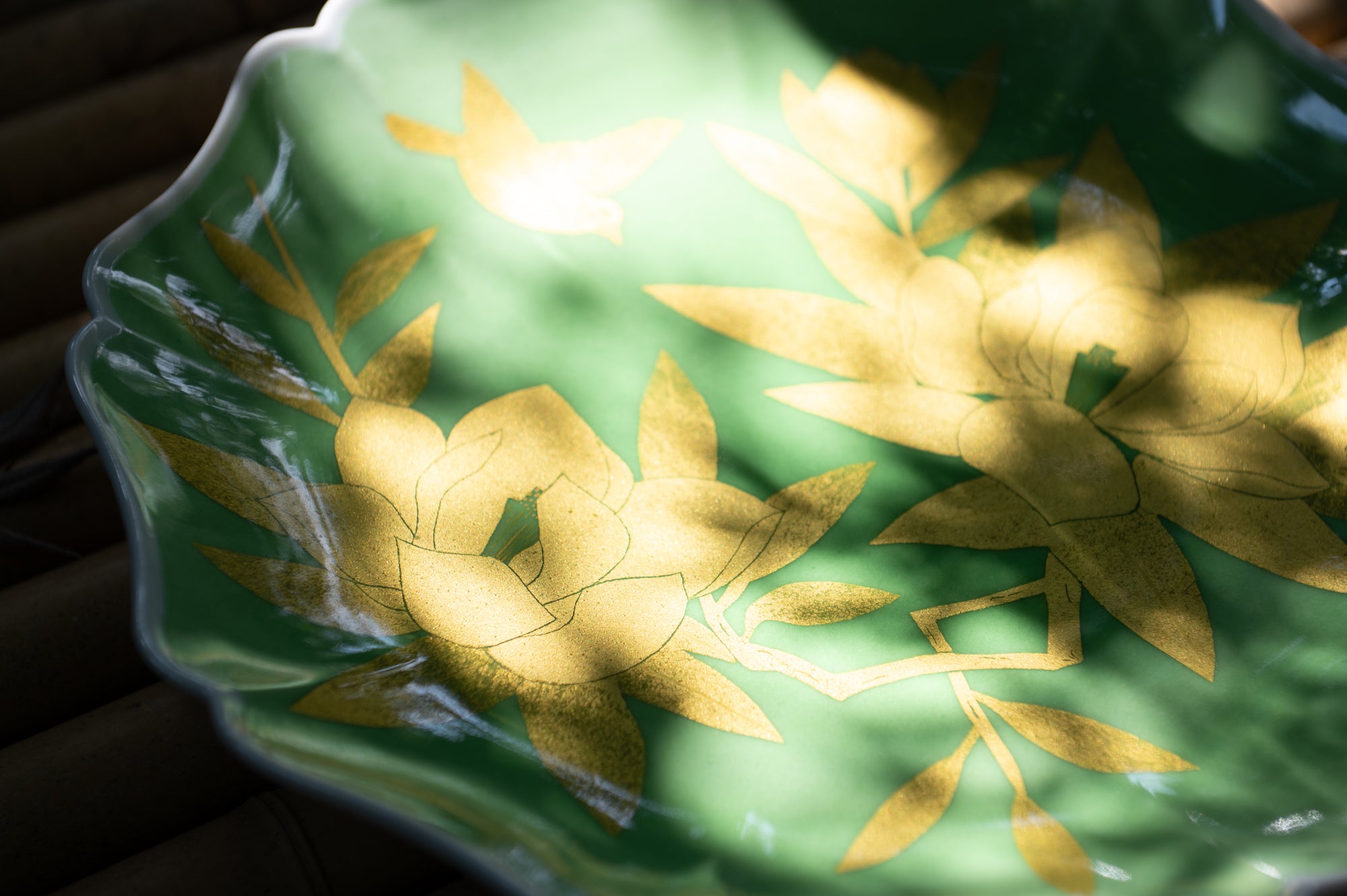
International Shipping
Multiple International Shipping Options
Discounted shipping for over 500000!
Free shipping for over 5000000!
Insured shipping service
Full compensation for any damage during transit.
Made by Japanese craftsmen
Fair Pricing, free Furoshiki wrapping!

